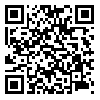Volume 14, Issue 1 (3-2024)
J Health Saf Work 2024, 14(1): 54-71 |
Back to browse issues page
Download citation:
BibTeX | RIS | EndNote | Medlars | ProCite | Reference Manager | RefWorks
Send citation to:



BibTeX | RIS | EndNote | Medlars | ProCite | Reference Manager | RefWorks
Send citation to:
Naghavi-Konjin Z, Keshavarz V, Gheysar Koushki K, Yazdani Niko A, Yazdani Charati J, Gorgani Firouzjaei M. Survey of the correlation between COVID-19 risk perception and anxiety among manufacturing workers. J Health Saf Work 2024; 14 (1) :54-71
URL: http://jhsw.tums.ac.ir/article-1-6939-en.html
URL: http://jhsw.tums.ac.ir/article-1-6939-en.html
Zahra Naghavi-Konjin * 
 1, Vajiheh Keshavarz2
1, Vajiheh Keshavarz2 
 , Khadijah Gheysar Koushki1
, Khadijah Gheysar Koushki1 
 , Afsaneh Yazdani Niko1
, Afsaneh Yazdani Niko1 
 , Jamshid Yazdani Charati3
, Jamshid Yazdani Charati3 
 , Mohsen Gorgani Firouzjaei1
, Mohsen Gorgani Firouzjaei1 


 1, Vajiheh Keshavarz2
1, Vajiheh Keshavarz2 
 , Khadijah Gheysar Koushki1
, Khadijah Gheysar Koushki1 
 , Afsaneh Yazdani Niko1
, Afsaneh Yazdani Niko1 
 , Jamshid Yazdani Charati3
, Jamshid Yazdani Charati3 
 , Mohsen Gorgani Firouzjaei1
, Mohsen Gorgani Firouzjaei1 

1- Department of Occupational Health Engineering, School of Public Health, Mazandaran University of Medical Sciences, Sari, Iran
2- Department of Occupational Health Engineering, Student Research Committee, Faculty of Health, Mazandaran University of Medical Sciences, Sari, Iran
3- Department of Biostatistics, Faculty of Health, Mazandaran University of Medical Sciences, Sari, Iran
2- Department of Occupational Health Engineering, Student Research Committee, Faculty of Health, Mazandaran University of Medical Sciences, Sari, Iran
3- Department of Biostatistics, Faculty of Health, Mazandaran University of Medical Sciences, Sari, Iran
Abstract: (497 Views)
Introduction: People’s risk perception in an emergency situation affects how they behave. During the pandemic of a disease like COVID-19, the fear of the disease and its consequences causes people to deal with anxiety. The present study was conducted with the aim of determining the relationship between the perception of the risk of COVID-19 and the experience of anxiety caused by it among workers in manufacturing industries.
Material and Methods: The present descriptive-analytical study was conducted cross-sectionally in 2022 among 545 workers of manufacturing industries located in Tehran, Mazandaran and North-Khorasan provinces. In the study, data collection was conducted using three questionnaires: a demographic information questionnaire, the COVID-19 Disease Anxiety Scale (CDAS), and the COVID-19 Risk Perception and Psychological Predictors against COVID-19 questionnaire. Data analysis was done using descriptive (mean and standard deviation) and analytical statistics (Canonical Correlation Coefficients or CCC) in SPSS V25 software.
Results: The mean ± SD of the workers’ age was 35.98 ± 7.58 years, while the scores for risk perception and anxiety were 12.89 ± 3.31 and 4.51 ± 1.51, respectively. The Concordance Correlation Coefficient (CCC) between risk perception and anxiety caused by the COVID-19 disease in the first Canonical point was 0.734, and in the second Canonical point, it was 0.229. The corresponding p-value was found to be less than 0.01. Psychological symptoms (Canonical loading = -0.725) and physical symptoms (Canonical loading = -0.421) played a significant role in predicting the variability of the risk perception of COVID-19.
Conclusion: The perception of risk related to the COVID-19 disease resulted in a decrease in anxiety, having a more pronounced effect on psychological symptoms compared to physical symptoms. Therefore, in times of pandemic outbreaks similar to COVID-19, implementing measures that enhance workers’ awareness and understanding of the disease risks can prove effective in managing anxiety.
Material and Methods: The present descriptive-analytical study was conducted cross-sectionally in 2022 among 545 workers of manufacturing industries located in Tehran, Mazandaran and North-Khorasan provinces. In the study, data collection was conducted using three questionnaires: a demographic information questionnaire, the COVID-19 Disease Anxiety Scale (CDAS), and the COVID-19 Risk Perception and Psychological Predictors against COVID-19 questionnaire. Data analysis was done using descriptive (mean and standard deviation) and analytical statistics (Canonical Correlation Coefficients or CCC) in SPSS V25 software.
Results: The mean ± SD of the workers’ age was 35.98 ± 7.58 years, while the scores for risk perception and anxiety were 12.89 ± 3.31 and 4.51 ± 1.51, respectively. The Concordance Correlation Coefficient (CCC) between risk perception and anxiety caused by the COVID-19 disease in the first Canonical point was 0.734, and in the second Canonical point, it was 0.229. The corresponding p-value was found to be less than 0.01. Psychological symptoms (Canonical loading = -0.725) and physical symptoms (Canonical loading = -0.421) played a significant role in predicting the variability of the risk perception of COVID-19.
Conclusion: The perception of risk related to the COVID-19 disease resulted in a decrease in anxiety, having a more pronounced effect on psychological symptoms compared to physical symptoms. Therefore, in times of pandemic outbreaks similar to COVID-19, implementing measures that enhance workers’ awareness and understanding of the disease risks can prove effective in managing anxiety.
Type of Study: Research |
Received: 2024/03/25 | Accepted: 2024/03/29 | Published: 2024/03/29
Received: 2024/03/25 | Accepted: 2024/03/29 | Published: 2024/03/29
| Rights and permissions | |
 |
This work is licensed under a Creative Commons Attribution-NonCommercial 4.0 International License. |




